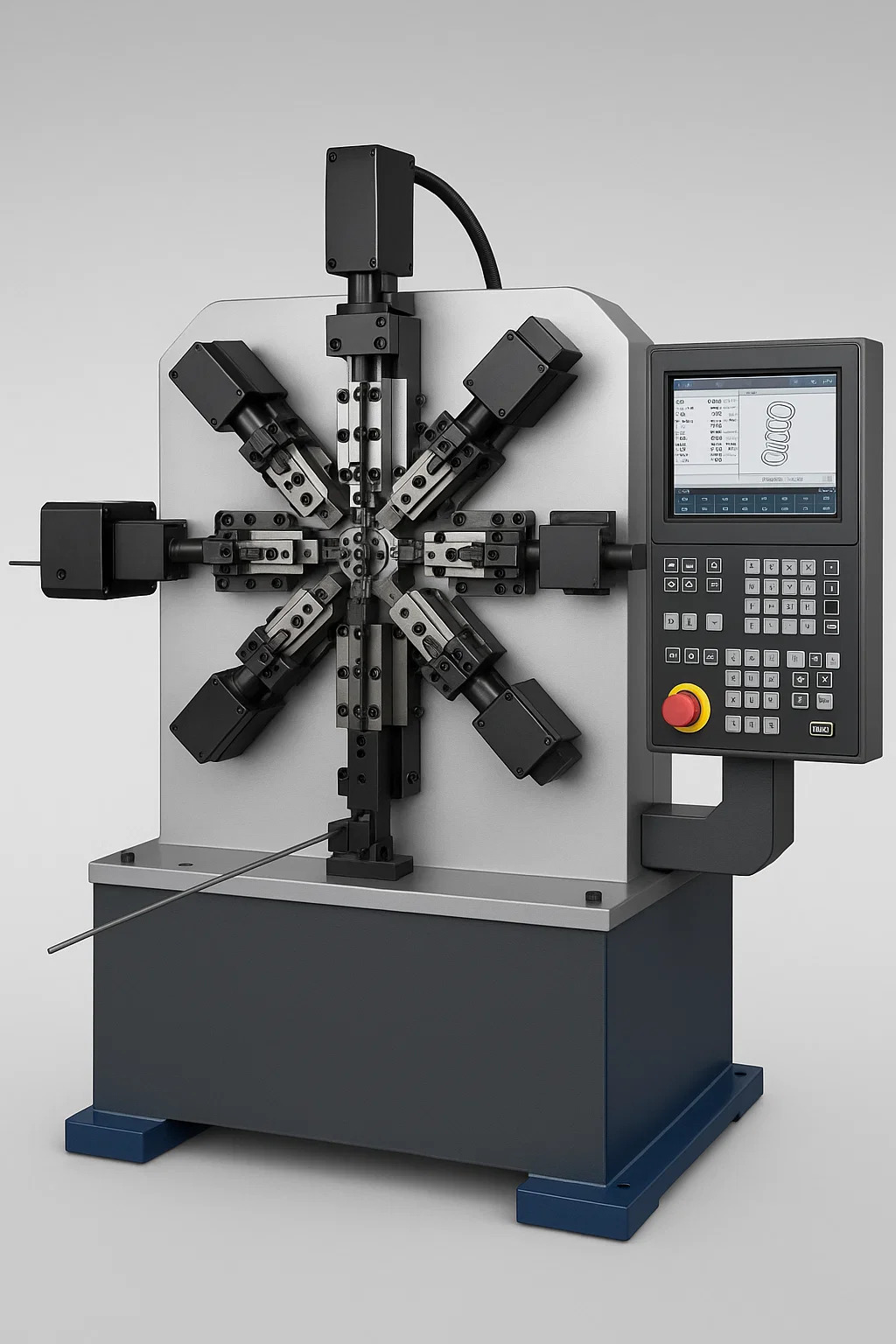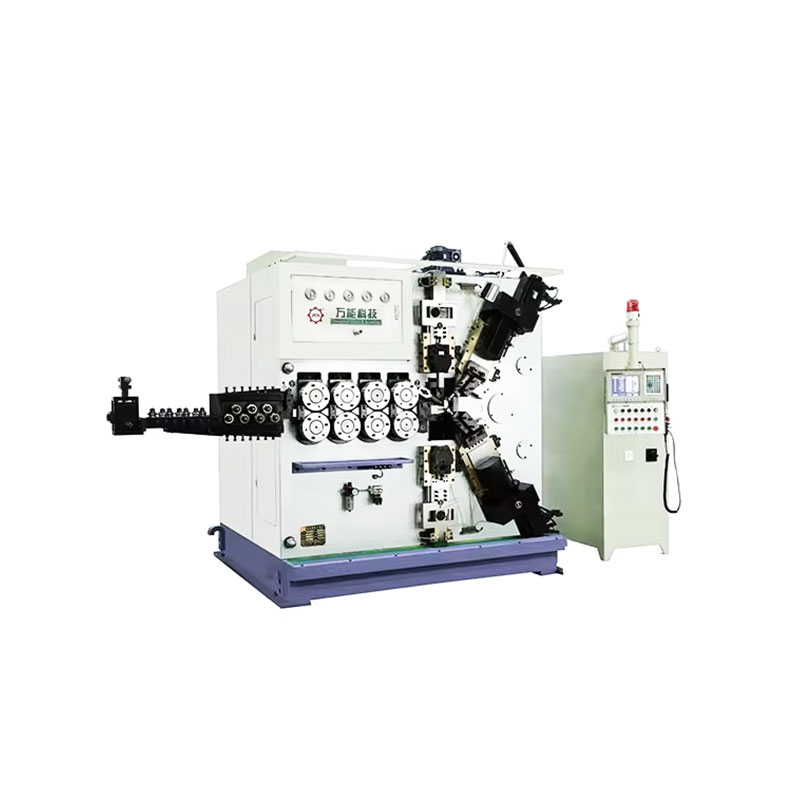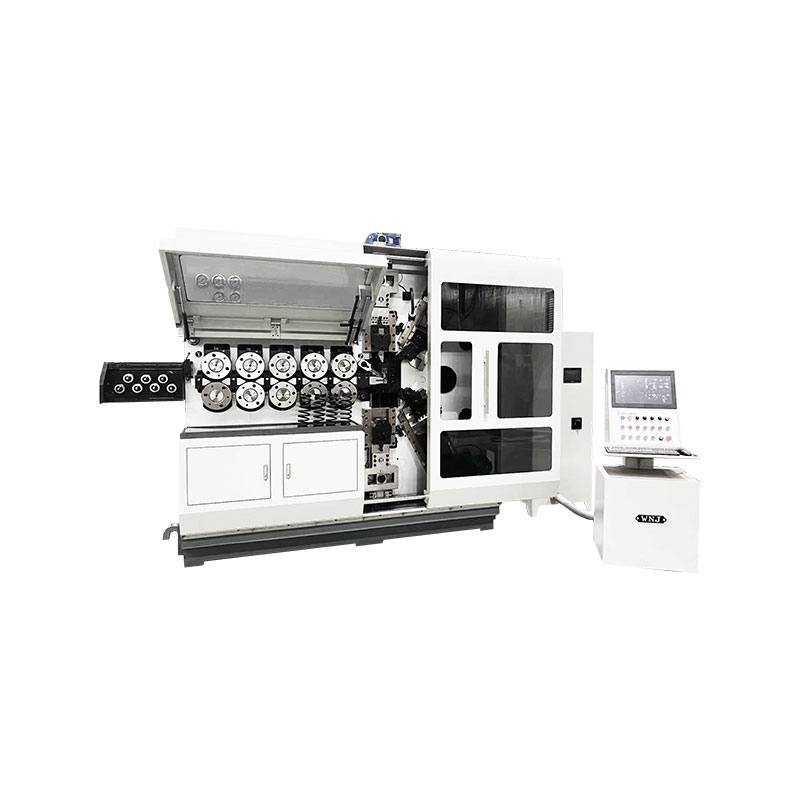A CNC spring machine is a computer-controlled industrial device designed for automated precision manufacturing of springs and wire forms. Here's how it functions and its key characteristics:
Content
•Unlike mechanical spring machines driven by physical cams and gears, a CNC machine relies entirely on a dedicated computer controller.
•This controller executes programmed instructions to command all machine movements and actions with high precision.
•The machine's critical functions are powered by individual servo motors, each controlling a specific axis of motion.
•Wire Feeding: Precisely pushes measured lengths of wire into the forming area.
•Forming Tools (Multiple Axes): Control the movement of several bending tools (slides, fingers) around the central forming point.
•Cut-Off Tool: Drives the blade that shears the finished part from the wire.
•Optional Axes: May include tools for coiling pitch control, auxiliary bending, or end forming (e.g., flattening).
•Production is guided by a digital program created offline or directly on the machine's control panel.
•Operators input spring/wire form specifications (wire diameter, outer dimensions, number of coils, bend angles, end shapes, etc.) into specialized CAD/CAM software bundled with the machine.
•The software converts these specifications into machine code (like G-code) that the controller understands.
•Loading the correct wire coil.
•Installing the required forming tools (bending fingers, mandrels, cut-off blade) into their designated servo-driven posts.
•Inputting the program into the controller.
•Wire Feed: The servo-driven feed rollers push a precise length of straightened wire into the forming zone.
•Coordinated Tool Movement: Based on the program, the controller activates the servo motors for each forming tool axis independently and simultaneously. •Tools move in complex paths – sliding, rotating, pressing – to bend the wire around mandrels or against each other.
•Progressive Bending: Multiple bends, coils, loops, or complex 3D shapes are formed progressively within a single cycle as the wire feeds and tools move.
•Cut-Off: After the final shape is formed, the servo-driven cut-off tool cleanly shears the finished part from the trailing wire.
•Ejection & Repeat: The finished part falls or is ejected, all tools retract, and the cycle repeats immediately at high speed.
•Rapid Changeovers: Switching between different spring designs takes minutes (loading new program, possibly changing tools) instead of hours/days required for mechanical cam adjustments.
•Complex Geometries: Capable of producing highly intricate springs and wire forms with multiple bends, varied coil pitches, complex end forms, and true 3D shapes that are impossible on mechanical machines.
•High Precision & Consistency: Servo control and digital programming ensure micron-level repeatability for every part.
•Flexibility: Ideal for prototyping, small batches, high-mix production, and complex one-off parts.
•Reduced Expertise Dependency: Less reliance on highly skilled "setup mechanics" compared to tuning mechanical cam machines; more emphasis on programming skills.
All standard spring types (compression, extension, torsion).
Complex specialty springs (e.g., double torsion, conical, barrel-shaped, miniaturized springs).
Sophisticated wire forms (clips, brackets, connectors, frames, medical components, electronic contacts) requiring multiple precise bends in different planes.


TK-13200、 TK-7230 TK-13200、 TK-7230 12AXES CNC SPRING COILING MACHINE...
See Details
TK-13200、 TK-7230 TK-13200、 TK-7230 12AXES CNC SPRING COILING MACHINE...
See Details
TK12120 TK-12120 12AXES CNC SPRING COILING MACHINE...
See Details
TK-6160 TK-6160 CNC SPRING ROLLING MACHINE...
See Details
TK-6120 TK-6120 CNC SPRING ROLLING MACHINE...
See Details
TK-5200 TK-5200 5AXES CNC SPRING COILING MACHINE...
See Details
TK-5160 TK-5160 5AXES CNC SPRING COILING MACHINE...
See Details
TK-5120 TK-5120 5AXES CNC SPRING COILING MACHINE...
See Details